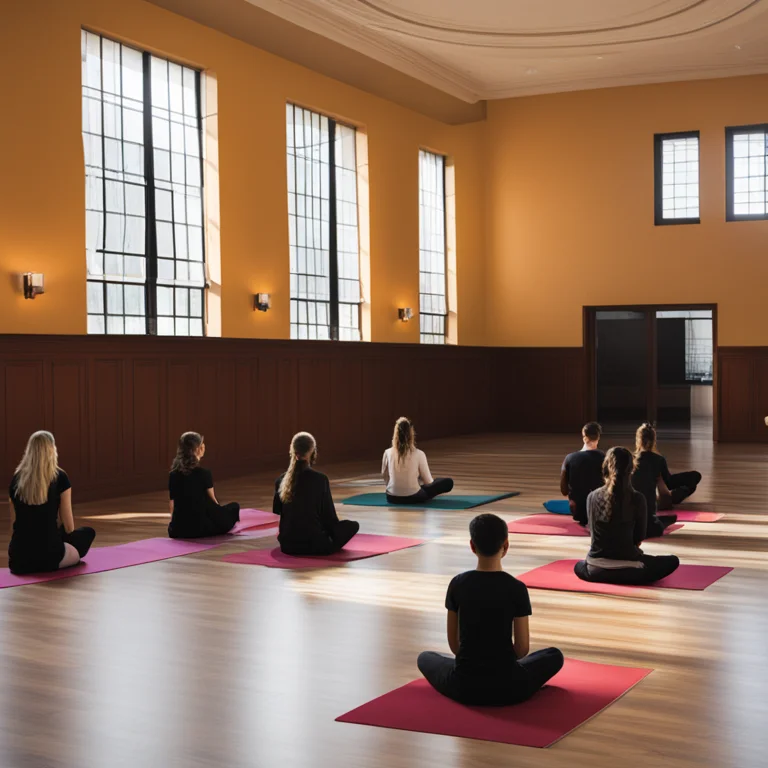
Mindful Moments for High School Zen
How mindfulness meditation can benefit high school students, enhancing focus, reducing stress, and promoting overall well-being.
article by Hina Kurosawa
Introduction to Mindful Meditation
In the bustling hallways and demanding environment of high school, students juggle academics, extracurriculars, and social relationships. Amidst this whirlwind, mindfulness meditation emerges as an oasis of calm. Originating from ancient practices, meditation has transitioned into a modern tool for well-being, particularly apt for the digital age that defines the lives of contemporary students. Embracing mindfulness can transform the anxiety-fueled reality of high school into a more balanced and focused experience.

The Science of Mindfulness
As of 2024, numerous studies have highlighted the impacts of mindfulness on the adolescent brain. Researchers find that consistent mindfulness practices nurture the prefrontal cortex, the region associated with decision-making and impulse control. Moreover, these practices help regulate the amygdala, thus leading to better stress management. For high school students caught in the rip currents of hormonal changes and academic pressures, the ability to calm the storm within becomes an invaluable skill.

Integrating Meditation into Student Life
Adopting mindfulness meditation doesn't require monumental shifts in a student's schedule. Small, dedicated pockets of time—perhaps five minutes before starting homework or during a study break—can make a significant difference. Apps and online platforms have sprung up, offering guided sessions specifically geared towards teenagers, ensuring the practices are both accessible and engaging. Regularity rather than duration is the key to reaping the benefits of mindfulness for students.

Benefits Beyond Stress Relief
While stress relief is a vital aspect of meditation, the advantages extend further. Improved concentration, heightened emotional intelligence, and better sleep quality are just a few of the corroborated benefits. Moreover, mindfulness aids students in developing a non-judgmental awareness of the present moment, which can enhance their academic performance and personal relationships by fostering a more empathetic approach to themselves and others.

Overcoming Challenges
High school students may initially find meditation challenging, wrestling with wandering thoughts or restlessness. However, the beauty of mindfulness lies in its non-competitive nature; there's no such thing as 'failing' at meditation. Rather, each moment of distraction is an opportunity to gently redirect attention back to the present. With time and practice, students learn to observe their thoughts without getting entangled, a skill that pays dividends in the complex realities of student life.
Empirical Support for Mindfulness in Schools
Educational institutions have increasingly recognized mindfulness as an essential component of a holistic education. Pilot programs incorporating mindfulness into school curricula are on the rise, with positive feedback from both students and educators. The introduction of quiet zones, meditation clubs, and mindfulness in physical education classes embodies the growing appreciation for the quiet power of this ancient practice in a modern educational setting.
Published: 1/9/2024
Modified: 1/9/2024
More predictions
Come back here soon to learn more about yourself and your future


Delving Into Meditation Queries for Spiritual Guidance
Discover insightful meditation questions that guide your spiritual journey, foster inner clarity, and enhance your metaphysical practices.


Mindfulness Meditation for Young Students
Mindfulness meditation practices tailored for first graders to foster attention, calmness, and emotional regulation.


Mind Boost: Can Meditation Enhance Intelligence?
This article delves into whether meditation practices can contribute to increased intelligence, combining scientific insights and practical advice for mental enhancement.